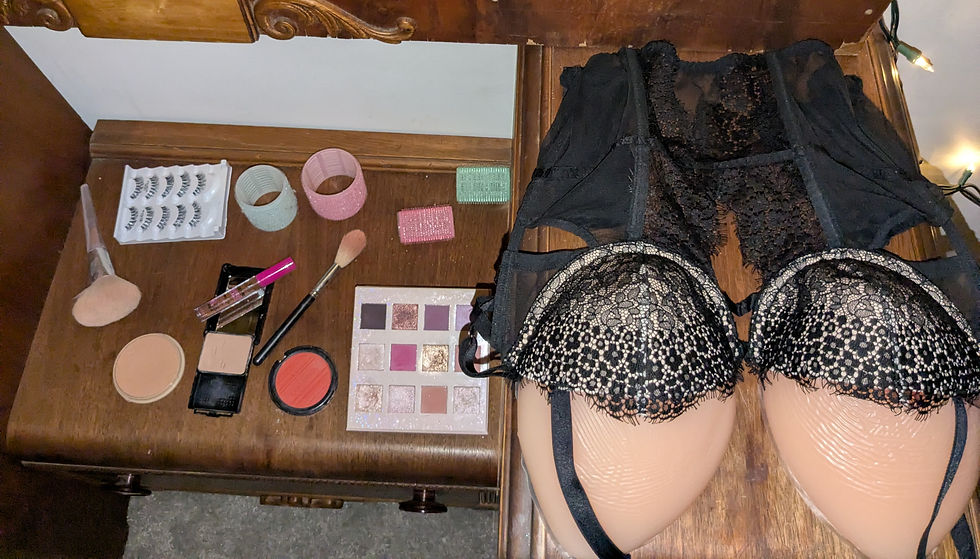👠 A Brief History of Crossdressing: Expression, Survival & Celebration
- hi909852
- Mar 24
- 2 min read
Crossdressing is not a trend—it’s a deep, complex part of human culture that stretches back centuries. From ritual and rebellion to gender play and performance, people have been crossing gender boundaries in clothing for as long as there have been clothes.
At Femme Studio, we honor this history while helping you create your own. Here's a look at the journey that brought us here.
🏛️ Ancient Origins: Power, Ceremony & Role Play
Crossdressing has appeared in cultures worldwide since ancient times:
Egypt & Mesopotamia: Priests and spiritual figures would wear garments considered feminine to invoke the divine.
Ancient Greece: Male actors played female roles in theater, often seen as a sacred performance.
Feudal Japan: Onnagata (male performers of female roles) in Kabuki theatre were revered for their beauty and skill.
Here, gendered clothing wasn’t just for fashion—it was used for connection, transformation, and art.
🎭 Europe: Restriction & Resistance
In medieval and Renaissance Europe, clothing laws (called "sumptuary laws") tried to limit what people could wear by gender and class. Still, people pushed back:
Joan of Arc famously wore men’s armor and was burned at the stake—in part for defying gendered dress codes.
In Elizabethan theatre, all roles were played by men, with elaborate dresses and wigs worn on stage.
Throughout history, women disguised as men to enter spaces they were barred from: military, academia, even the stage.
Crossdressing here became a tool of rebellion, survival, and storytelling.
🎩 The 1800s–1900s: From Underground to Spotlight
As gender roles became more rigid in Western society, crossdressing became both more taboo—and more visible:
Vaudeville and burlesque performers often included drag acts, with both men and women playing across gender lines.
Trans women and gender-nonconforming people began forming underground communities in cities like Paris, Berlin, and New York.
Marsha P. Johnson, Sylvia Rivera, and other trans femmes of color were central figures in the LGBTQ+ liberation movement of the 1960s and '70s.
Crossdressing during this time was not just theatrical—it was political. It meant visibility, survival, and defiance.
🖥️ Today: Identity, Art & Affirmation
In the 21st century, crossdressing exists across a vibrant spectrum:
Drag performance has gone mainstream, but drag queens and kings have always been rooted in culture, satire, and resistance.
Crossdressing for pleasure, identity, or exploration is more visible—and more accepted—than ever.
Trans women, nonbinary people, and genderfluid individuals continue to use clothing as a means of self-expression and gender affirmation.
The lines between crossdressing, fashion, and gender identity continue to evolve. What hasn’t changed? The power of transformation.
💫 Why We Celebrate It at Femme Studio
At Femme Studio, we don’t see crossdressing as a costume. We see it as a language. A way to express something deeper:
Your softness
Your strength
Your sensuality
Your curiosity
Whether you're dressing femme for the first time or refining your aesthetic, you're participating in a long, sacred lineage of transformation.
And that’s worth celebrating.
You are not alone. You are not new. You are part of something ancient and beautiful.
Let’s make history together.



Comments